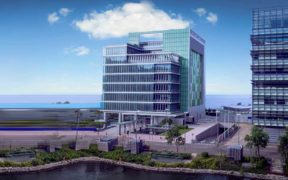Category: Public Safety

iBwave is well known in the in-building DAS and WiFi network design space, but did you know that we’re also the leaders in in-building design for public safety networks? In this post, we’re going to go into detail on designing public safety networks, how they’re different than traditional network designs, and how iBwave provides solutions […]

A business campus is the home away from home to millions of busy professionals around the world who increasingly demand constant and seamless connectivity. Emails, video conference calls, and heavy downloads are just some of the actions that business people do on their mobile phones daily. Strong, reliable and fast wireless connectivity is no longer […]

Raising awareness on the importance of indoor public safety communications is definitely a growing trend in the wireless industry. During Mobile World Congress last week, Jeff Mucci of RCR Wireless sat down with Mario Bouchard, President and CEO of iBwave and Seth Buechley, President of SOLiD Technologiesto discuss challenges and solutions for in-building public safety wireless networks. In the first […]
